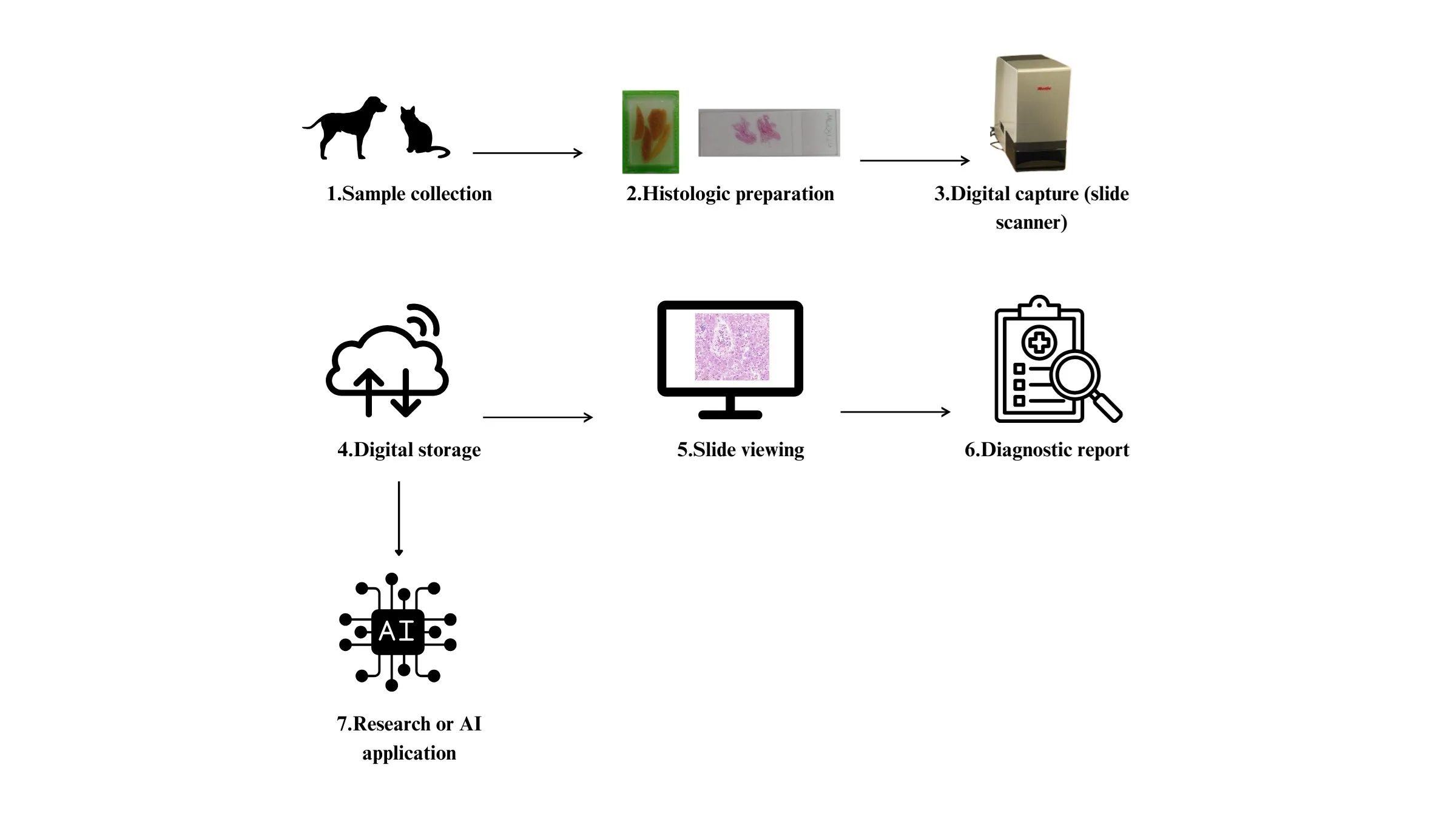Digital pathology and artificial intelligence in veterinary medicine
DOI:
https://doi.org/10.24070/bjvp.1983-0246.v17i3p147-151Abstract
This review discusses the benefits and limitations of using digital pathology and artificial intelligence in veterinary pathology. Digital pathology has the potential to build a global community of pathologists as it promotes communication and collaboration among professionals due to the ease of sharing scanned slides, allowing the flexibility of hybrid or remote work and reducing the need for travel. Artificial intelligence can assist pathologists in laborious tasks, such as counting mitoses and improving consistency in scoring systems. However, these technologies present limitations and risks that must be evaluated and managed carefully.


